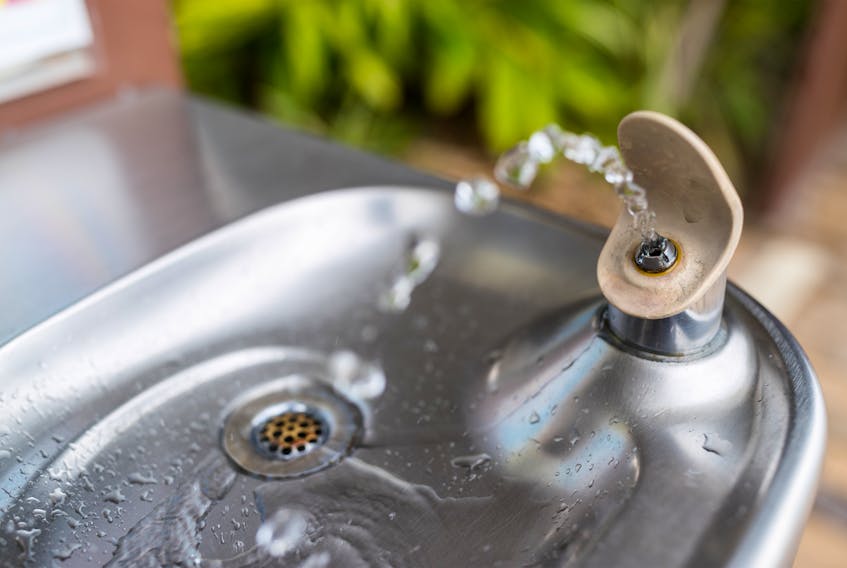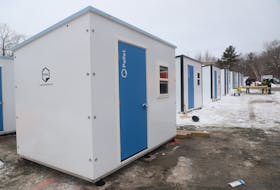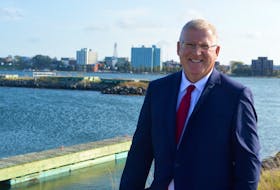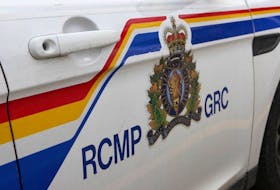SYDNEY, N.S. — Touchless fountains, new sinks and shut off faucets are the first steps being taken in response to the recent school water test report.
The testing was ordered by the Nova Scotia Department of Education and Early Learning last fall after Health Canada changed safe standard guidelines in March 2019. Levels for lead were cut in half from a concentration level of .01 milligrams/litre (mg/L) of water (10 micrograms or mcg/L). Copper levels were set at 2 mg/L.
Susan Kelley, executive director of the Cape Breton-Victoria Regional Centre for Education said they are waiting for the arrival of touchless fountains to start their remediation work.
When asked how many tests were done and how many exceedances they had, centre spokesperson Michelle MacLeod referred the Cape Breton Post to the 31-page report, done in a spreadsheet, for that information.
"The number of tests and exceedances are publicly available and on the website," she said via email.
As reported in the Cape Breton Post on Oct. 5, an initial review of the report indicated 28 out of 38 schools in the district had one or more water output inside — either faucets or fountains — in exceedance. Six of these schools had one or more fountains with high levels of lead.

Mike Landry, Strait Regional Centre for Education (SRCE) operations director, said work is already underway in their district and more than half of their exceedances have been reduced.
"We had 312 tests that we performed at various locations throughout facilities in the SRCE and 41 of those had exceedance ... Right now we're at 17 and you can see this on our website where we've published the results," Landry said.
"No school stood out (in the Strait Regional district) as having particularly poor results. Some of the larger schools have more exceedances simply because they have more taps ... you'd expect that to be proportional."
Many of the exceedances in the Cape Breton-Victoria Regional Centre for Education were in labs and classrooms, faucets that wouldn't be used for drinking but were tested because they could be.
"Ours are not out of whack with the other schools across the province ... I know that when you look at the results they're kind of startling but we're pretty similar to other regions across the province," said Kelley. "But I think the big point is as soon as they changed the guidelines we put in clean drinking water in all the schools."
Landry also stressed they have bottled water in all schools to ensure students are getting clean drinking water.
The Department of Education confirmed they started putting bottled water in schools in January 2020 "out of an abundance of caution" according to a written response received on Thursday.
"These included 284 schools that had not yet been tested for lead at that time and 40 schools that had been tested and required drinking water.
As reported in media, three Cape Breton-Victoria Regional Centre for Education schools had bottled water brought in starting November 2019, after finding high levels of lead. At this point, 14 of the 38 schools had been tested. Kelley said testing started in October. Landry said testing also started in October in the Strait Regional district.
Cause for concern?
Dr. Graham Gagnon, a professor at Dalhousie University in the Department of Civil and Resources Engineering, didn't closely examine the public schools water test results but was able to explain when lead concentration levels in water could be dangerous.
"The real concerns in that entire list (of results), in my opinion, would be ones that were almost 100 or well above 100 micrograms per litre (which is 0.1 mg/L)," said Gagnon, who is the NSERC/Halifax Water industrial research chair in water quality and treatment.
"What is really happening in these schools that they can get to this level? They should be taking immediate action. First resampling is an important action to making sure the testing was right. And then if it's right, making some decisions on the school infrastructure."
Gagnon said sometimes this means closing off that faucet permanently and other times replacing it or the water fountain is enough.
After reviewing the reports, the Cape Breton Post found at least 80 test locations in 13 Cape Breton-Victoria Regional Centre for Education schools which reported 100 mcg/L (0.1 mg/L) higher lead concentration levels.
These schools and the number of water outputs they had which tested 100 mcg/L lead concentration or higher are:
- Baddeck Academy (1)
- Boularderie Elementary School (1)
- Breton Education Centre (2)
- Cabot Education Centre (2)
- Cusack School (2)
- Dr. T.L. Sullivan (5)
- John Bernard Croak V.C. Memorial (2)
- Memorial Composite High School (4)
- Riverview High School (48)
- Sherwood Park Education Centre (7)
- Sydney River Elementary (1)
- Whitney Pier Memorial (4)
Two of 80 were fountains: one at Middle River Consolidated which has a level of 320 mcg/L (0.320 mg/L) and the other was at Memorial Composite High School which had a level of 160 mcg/L.
More than half of Riverview's 83 exceedances in lead concentration are over 100 mcg/L, ranging up to one sink in a lab with 9,100 mcg/L. Two of the 48 were in the cafeteria, 45 were in labs and one was in a location called "main".
Sherwood Park Education Centre had the highest lead concentration of 12,000 mcg/L at a water output tested in a lab (12,000 mcg/L).

The two exceedances at Cabot Education Centre are in the kitchen, one at Breton Education Centre is in the fitness centre and the one at Sydney River Elementary is in the health room.
In the Strait Regional Centre for Education, only one school reported lead levels over 100 mcg/L. Pleasant Bay had a faucet in the basement which has 4,000 mcg/L of lead which has never been used for drinking purposes.
No schools in Cape Breton in the Conseil scolaire acadien provincial (CSAP) district had levels this high.
It is unclear how long these lead concentration levels were this high as neither Kelley nor Landry could provide information on when testing from water output inside had last been done.
However, both explained water sources are regularly tested by the centre for education, if it's a registered water source like a well, or by the municipality if the school is on city water lines.
Fixing the problem
According to Gagnon, faucets and water fountains are often the cause of lead and copper in drinking water. This is due to the materials they are made of, some of which might no longer be used.
"We did some work at Dal around 2010 looking at fountains ... One building where we had one fountain and literally walked down the hall to another fountain," Gagnon said.
"The one fountain had very high lead and then the other fountain, in the same hall, same building, was completely compliant with lead rules. A lot of this has to do with how these fountains were maintained and when they were purchased."
Kelley and Landry said replacing faucets and fountains is step one. After re-testing, if this doesn't solve the problem they'll start looking at plumbing like pipes and lines.
"So far, we haven't needed to replace any plumbing (to reduce levels) so we haven't accumulated huge costs so far," Landry said. "The bigger impact for us is we've spent $21,000 on bottled water."
One faucet in Pleasant Bay School, which has extremely high lead and copper, is being turned off permanently, since it's in the basement and not used.
Kelley and Landry confirmed water testing started in October and November, then finished in the spring and summer because it can't be done in the winter.
Bottled drinking water will continue to be in schools until the lead levels are all reduced and the COVID-19 health protection measures are lifted.









